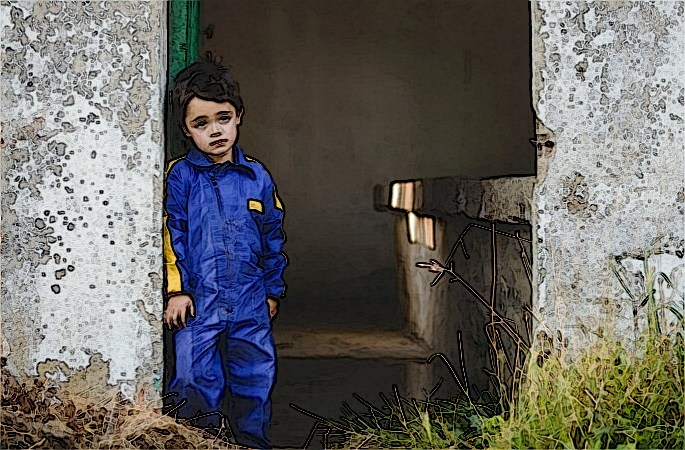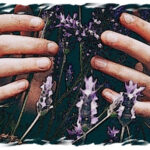I had the great privilege to read Anthony Doerr’s Pulitzer Prize-winning novel, All the Light We Cannot See, right before its release on Netflix, where it stands now as the number one trending show. The time I started the novel directly correlated with October 7th 2023, the start of the next chapter of the Palestinian-Israeli War. At first, I was hoping to escape from reality with the book, only to find myself immersed in another war-ravaged world. However, once I started reading, I realised the power of the book to offer insight into the current conflict.
The book centres around World War II and is predominately told from the points of view of two children: a German boy Werner Pfennig and a French girl Marie LeBlanc. The polarisation of the innocence of a child and the brutality of war had the power to create sympathetic characters and is relevant to the current war, where the majority of civilian deaths have been children.
Werner is an orphan who becomes a mastermind of building and repairing radios. This causes him to be recruited by the Hitler regime to eventually serve in the Nazi Army. Through Werner’s characterisation, Doerr’s skillfulness was shown in his ability to humanise ‘the monster.’ This was done by showing Werner’s life as an orphan whose life was predetermined to work in the coal mines and die there just like his father. The reader was able to sympathise and understand why joining the army was his only way out. This made me think of the innocent Palestinian people whose entire lives have been destroyed by Israeli occupation. What context does their radicalisation come out of? Like Werner, it comes out of a desperate situation with limited options.
***
Doerr wasn’t the first author to humanise the enemy. In The Runaways, Fatima Bhutto, humanises a young woman named Layla who joins a radical movement because of her social isolation, shame and guilt from a defining incident in her life, and abject poverty. A boy named Monty falls in love with Layla, causing him to join the same radical movement, which came not from his belief in the movement but from his love for Layla.
Tahmima Anam took on a similar project in her novel, Good Muslim, Bad Muslim, where she also seeks to contextualize a ‘radical Muslim,’ through the character of Sohail. Sohail wasn’t always religious, and in fact disliked religion, until he experienced the trauma of Pakistan-Bangladesh War of 1971, where he murdered an innocent man who he thought raped his love interest, Priya. This guilt haunts him and creates context for the shift in his character. His father also died in the war and he turned to Islam to help him cope and prove to both himself and God, that he is a ‘good person.’
All of these characters, Werner, Layla, Monty, and Sohail were sympathetic characters, once the reader understood the layers in which their decisions came out of. I question where this context is when we talk about taking down ‘the terrorists,’ ‘the savages,’ ‘the enemy combatants.’ What would humanizing the enemy do to our current narrative? What are their behaviors coming out of?
Why can’t we dare ask that question?
***
The radio allows Werner to connect to Marie who is both blind and trapped in her great-uncle’s attic in Saint Malo. This represents a major turning point for his character because he is forced to decide to either help Marie and risk his own life or be complicit in her death. Ultimately Werner transcends the horror of war and “opens his eyes and sees,” before it is too late.
One of the central themes of the book is around the nature of light and dark which serves as a symbol for not only the war, but for the characters transformations. The light is layered into the text in terms of the literal light in the form of electromagnetic waves from the radio they cannot see, the light emitted from the cursed diamond once it was destroyed in the sea, and all the light within Werner which he is unaware of until the very end. Although parts of the book were made up of the darkness of war: shelling, bombing, torture and pure evil, the relationship between Werner and Marie offered a ray of light through the tragedy of war; a collective human consciousness, a beating pulse, a way out.
***
The current narrative regarding the Israel-Palestine conflict is extremely polarized, but amidst the atrocities are heroic actions such as the Jewish community standing up and condemning the Israeli governments massacre of innocent Palestinian people, Muslims and Palestinians standing up and denouncing terrorism not only by the Israeli government, but by Hamas, and Muslims putting aside sectarian differences and coming together across national and ethnic lines. There is a banding together that has been unprecedented as demonstrated in the world-wide protests.
The book allowed me to consider what it would be like to add more complexity to the current narrative in terms of the inner worlds of those fighting with the IDF and Hamas, struggling with the morality of their actions, as Werner did, but being too afraid to take a different stand, or lacking that choice all together. It has also made me think about innocent children in both Palestine and Israel, who like Werner have been brainwashed in thinking violence will offer security. Werner came to see the truth for himself through Marie’s innocent voice, which reminded him of the French Professor he would listen to on the radio, as a child, with his sister. This Professor said, “Don’t you want to be alive before you die? Open your eyes and see what you can with them before they close forever.” This foreshadowed Werner’s transformation and future decisions. The Professor, who turned out to be Marie’s great-uncle, taught him about radios, the nature of light, and how to do science experiments, which created his passion and led him to becoming part of Hitler Youth and the subsequent enemy of the very people who he loved. As a result, Werner was able to see a human behind the enemy and this allowed him to change.
***
The book opens in the middle of the war with the Germans bombing France. “At dusk they pour from the sky. They blow across the ramparts, turn cartwheels over rooftops, flutter into the ravines between houses. Entire streets swirl with them, flashing white against the cobbles.” One way to interpret this quote is through the literal bombs and shelling that is blowing through the sky, the white against the cobbles reminding me of the white phosphorus used by Israel. However, the end of the book allows for an added layer to the interpretation.
“They flow above the chimneys, ride the sidewalks, slip through your jacket and shirt and breastbone and lungs, and pass out through the other side, the air a library and the record of every life lived, every sentence spoken, every word transmitted still reverberating within it.”
Through this image Marie remembers all the loved ones she lost: Werner, her father, Madame Manac and her great uncle Etienne, their memories, resonate deeply with the loss of Palestinian lives that echoed through me throughout the book. Every hour she thinks for someone who the war was memory falls out of the world, and yet she has hope.
“We rise again in the grass. In the flowers. In songs.” (Doerr, 529).
***
A poem by Hiba Abu Nada a Palestinian writer, before her death in the war on October 20, 2023:
I shelter you
and the children who
are sleeping
as chicks in the lap
of their nest
they don’t walk
in their dreams
because death
towards the house
walks
….
I shelter you
from wound and woe,
and with seven verses
I shield
the taste of orange
from phosphorus,
the color of clouds
from smoke.
(Joudah, Fady. “A Palestinian Meditation in a time of Annihilation,” LitHub. November 1, 2023)
***
Doerr was able to write a sympathetic Nazi character almost a century after WWII, when the world has equivocally denounced the evilness of the Nazi regime. There is no nuance necessary, there is no justification, it was not right, and it will never be right, but the damage has been done. There is no going back, and yet here we are on the brink of repeating the mistakes of history.
Why don’t we learn our lessons of history? Have our eyes been closed forever? How long it will take for our status quo governments in both the United States and EU to open their eyes and see the genocide in Gaza? Why does ‘seeing’ always have to be at the expense of the dead, after it is too late—as it was in Iraq?
Novelist and journalist Omar El Akkwad recently tweeted: “One day, when it’s safe, when there’s no personal downside to calling a thing what it is, when it’s too late to hold anyone accountable, everyone will have always been against this.”
I hope this book can offer another way to think about the Israeli-Palestinian conflict. A way for both sides to see the human beings beyond the ‘sides,’ and start to see each other as a collective human race with the possibility of peace, which could become all the light we cannot see.
Sources:
Anam, Tahmima. Good Muslim, Bad Muslim: A Novel. Deckle Edge. August 2, 2011.
Bhutto, Fatima. The Runaways: A Novel. Verso Fiction. August 18, 2020.
Doerr, Anthony. All the Light We Cannot See: A Novel. Scribner, 2014.
Joudah, Fady. “A Palestinian Meditation in a time of Annihilation.” LitHub. November 1, 2023.



